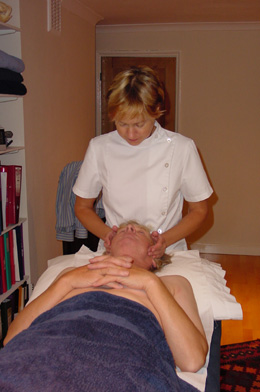What is Osteopathy? Osteopathy is a distinct system of diagnosis and treatment, aimed at helping the body’s ability to move as well as it possibly can. Osteopaths use their hands to identify any abnormalities or injured parts of the human body, such as muscles, ligaments, nerves and joints. Your body needs to be balanced and efficient (like a well-tuned engine) if it is to function with the minimum of wear and tear and injury. See also...Why see an Osteopath? The Human Body is a Dynamic Machine... Why
see an osteopath? Individuals
are precisely that. Each person has his or her own unique combination
of body shape, lifestyle, occupation and personal & medical history. Osteopathy’s
main strength lies in its unique way of assessing patients from not only
a mechanical, functional and postural standpoint but by also taking these other important factors in to account. This approach enables osteopaths to identify things
in your life that may be hindering your body’s ability to heal itself
or resulting in the onset or reoccurrence of your symptoms. Osteopaths
aim to identify what’s causing your current symptoms,
the initial cause of your pain or discomfort and anything that may be
preventing it from resolving naturally (restrictions elsewhere in your
body for example). This is why it is so important to get to know you,
what you and your body have been through and what your hopes and expectations
are. Return to Top of Page or see information on Emily Alexander (Registered Osteopath at the Backworking Osteopathic Practice in Barnsbury, Islington London N1). The Backworking Osteopathic Practice links with: Emily
Alexander has a particular interest in treating migraines, sinus problems and coccyx pain. She is a fully qualified Osteopath having completed the 5 year
degree programme at the College of Osteopaths in London in 2004. She is registered
with the General Osteopathic Council (GOsC). She also holds an honours Degree
in Physiology from the University of Bristol and a Diploma in Sports Injuries
from the Association of Physical and Natural Therapists (APNT), for which
she was awarded a Distinction. Emily works to high professional standards
and puts the safety and well being of patients above all other considerations.
She regularly attends additional professional courses to further develop
her skills, is an occasional examiner at the College of Osteopaths in London and works with medical practitioners in the best interests
of patients. Emily also has 7 years experience in lab-based physiological research, she set up the Bristol Heart Valve Bank (preparing and storing human heart valves for transplantation) and underwent training as a Cardiac Perfusionist at St. Bartholomew's Hospital in London. |
.jpg)
 |